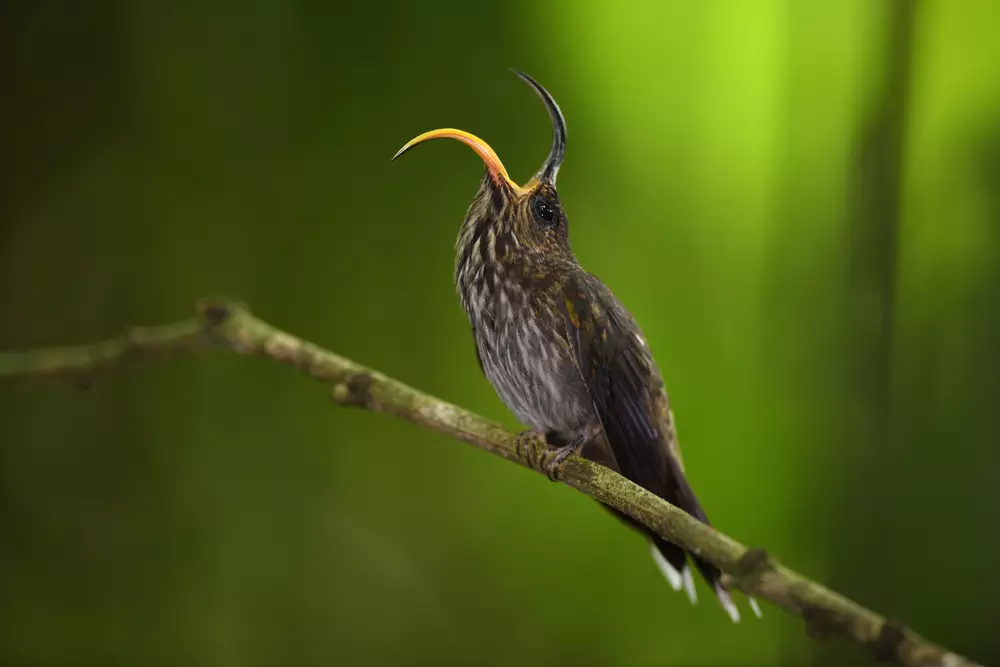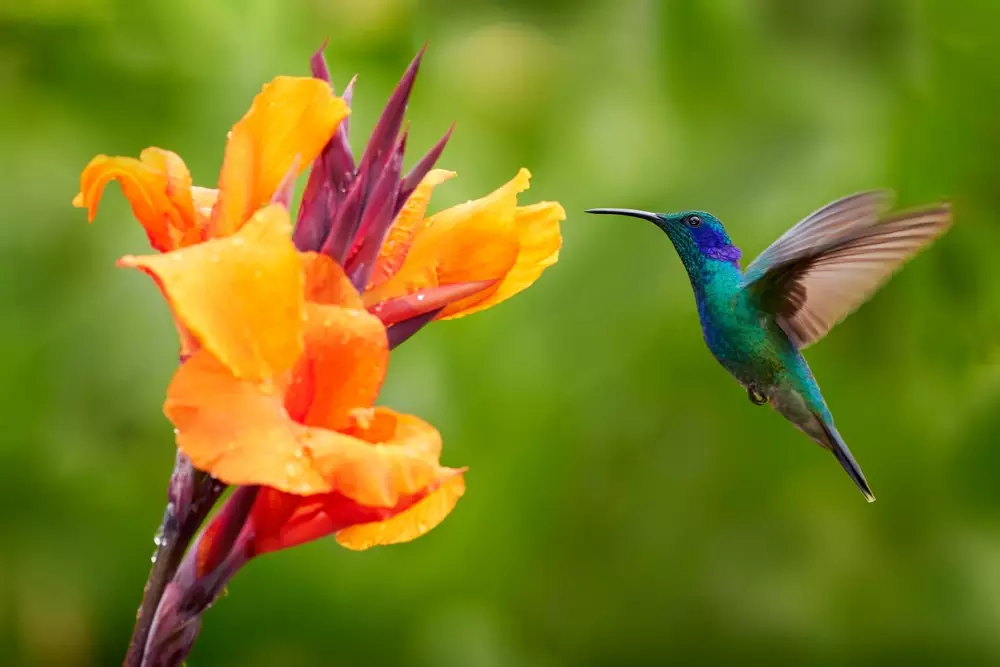Hummingbirds, known for their tiny size and high-speed flight, have always fascinated birdwatchers and scientists alike. Among the various species of these enchanting creatures, it’s the male hummingbird that often captures the most attention with its vibrant plumage and distinctive courtship rituals. A male hummingbird is called just that – a ‘male hummingbird.’ There isn’t a special term or moniker assigned to them.
Understanding the world of these avian wonders can be a fascinating journey. Their vibrant colors, distinctive behaviors, and the ability to hover in mid-air have always intrigued bird lovers and researchers. The male hummingbirds, in particular, possess unique characteristics that set them apart, making them a subject of particular interest in the study of avian species.
Basic Hummingbird Characteristics
Hummingbirds, belonging to the family Trochilidae, are one of the smallest bird species in the world. They are native to the Americas and are known for their ability to fly at incredible speeds, even compared to other birds.
They can flap their wings up to 200 times per second, and are the only birds capable of flying backward. There are about 360 different species of hummingbirds, each exhibiting a unique set of traits and behaviors.
What Is a Male Hummingbird Called?
In the world of hummingbirds, the males are referred to as ‘male hummingbirds.’ Unlike some animal species that have specific names for males, female, and young, hummingbirds do not have distinct names based on gender or age.
Despite this, male hummingbirds can be easily distinguished from their female counterparts through their physical traits and behaviors.

Unique Features of Male Hummingbirds
Dazzling Plumage
Male hummingbirds are instantly recognizable due to their flamboyant, brightly colored plumage, which differentiates them from females. This brilliant plumage, particularly around the neck and head, known as a gorget, is not just for aesthetics.
It plays a pivotal role in courtship displays and territorial defenses. When a male hummingbird wants to attract a female or intimidate a rival, it will angle its body so that the sunlight hits its feathers, causing them to shimmer and flash brilliantly.
Distinctive Sounds and Display Flights
Male hummingbirds are known for their unique calls, a component of their multi-faceted courtship ritual. Many species produce specific calls, a blend of chirps, squeaks, and buzzes to woo the females. These unique sounds are often accompanied by equally distinctive display flights.
During these display flights, males will perform a variety of acrobatics, including high-speed dives, rapid back-and-forths, and loops, all aimed at impressing prospective mates.
For instance, the male Anna’s Hummingbird ascends around 30 meters into the air, only to plummet in a daredevil dive, producing a loud “squeak” at the bottom of its dive, impressing the female with both its audacity and aerobatic prowess.
Role in Breeding and Nesting
Although male hummingbirds play an important part in the reproductive process, they have little to do with the construction of nests or raising the young. After the courtship and mating process, the male hummingbird’s role concludes. The female takes on the duty of building the nest, incubating the eggs, and caring for the hatchlings.
How to Identify a Male Hummingbird?
Difference in Plumage
A clear way to identify a male hummingbird is through the difference in plumage. In most hummingbird species, males have more vibrant, iridescent plumage compared to females, making them easier to spot. For instance, the male Ruby-throated Hummingbird possesses a stunning, shiny red gorget, a feature that the female lacks.
Distinctive Behaviors
Observing hummingbird behavior can also be an effective way to determine their sex. Male hummingbirds are often more aggressive and territorial. During the breeding season, they perform elaborate flight displays and make distinctive calls to attract females, behaviors that can help birdwatchers identify them.

Are There Any Specific Types of Male Hummingbirds?
There are several species of hummingbirds, each having unique traits that differentiate males from females. Here are a couple of examples:
Ruby-throated Hummingbird
The Ruby-throated Hummingbird is the most common hummingbird species in eastern North America. The male is known for its glittering red gorget, which contrasts with its green upper parts and white belly. Females lack the radiant red throat, making the males stand out.
Anna’s Hummingbird
Native to the west coast of North America, Anna’s Hummingbirds are a sight to behold. Males are easily recognizable by their rose-pink heads and throats, distinguishing them from the females that sport a more subdued grayish-green color palette.
Fascinating Facts About Male Hummingbirds
Unique Behaviors
One of the most captivating aspects of male hummingbirds is their complex array of behaviors. During the breeding season, males engage in stunning aerial displays, including vertical ascents, zig-zag flights, and rapid dives. These acrobatic maneuvers are designed to impress potential mates and establish dominance over territories.
Unique Physical Features
Male hummingbirds possess unique physical characteristics that set them apart from females. Most notably, their vibrant, iridescent plumage, particularly around the neck and head, serves as a beacon to attract females during the mating season.
Furthermore, males of certain species, like the Sword-billed Hummingbird, possess exceptionally long bills, evolved to access nectar from specific flowers.
Conservation Status of Hummingbirds
Importance of Hummingbird Conservation
Hummingbirds play a crucial role in the ecosystems they inhabit. They are excellent pollinators and contribute to the reproduction of many flowering plants. Additionally, their diets, primarily comprising of insects and spiders, help control these populations, contributing to overall ecological balance.
Current Status and Potential Threats
The conservation status of hummingbirds varies by species. While many are listed as ‘Least Concern’ by the IUCN, others are threatened or endangered due to habitat loss, climate change, and other human-induced factors.
Frequently Asked Questions About Male Hummingbirds
Why are male hummingbirds more colorful?
Male hummingbirds are more colorful as a result of sexual selection. This means females prefer to mate with males that have the brightest and most striking colors, thereby passing on these traits to the next generation.
What is the lifespan of a male hummingbird?
While the lifespan of a hummingbird can vary among species, most live on average for 3 to 5 years. Some, however, have been known to live for over a decade in the wild, given optimal conditions.
How does a male hummingbird attract a mate?
A male hummingbird primarily uses its vibrant plumage and complex aerial displays to attract a mate. These behaviors, often combined with unique sounds, help the male to stand out and draw the attention of females during the breeding season.
Conclusion
Hummingbirds are a remarkable example of nature’s ingenuity and aesthetic prowess. The males, with their vibrant plumage and intricate courtship displays, provide an enchanting spectacle for bird enthusiasts and researchers alike.
Despite their small size, they play a significant role in maintaining ecological balance and contributing to biodiversity. It is imperative to ensure their conservation and promote efforts that protect their habitats and survival.
